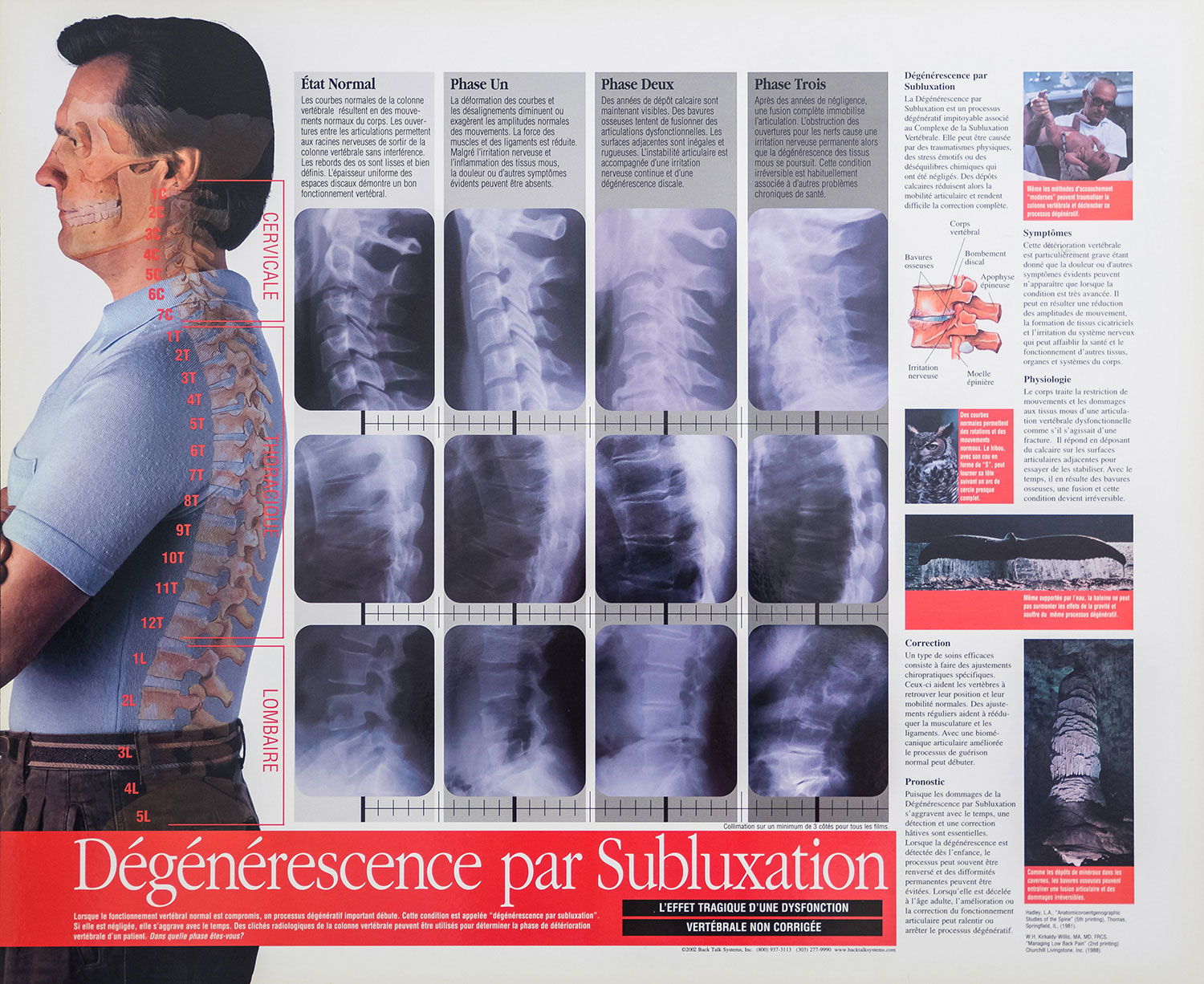VERTEBRAL SUBLUXATION
A subluxation is a motion segment, in which alignment, movement integrity, and/or physiological function are altered in normal standing position. Any joint in the human body can be affected, but it is especially damaging when it affects the spinal column, which protects the peripheral nervous system (spinal marrow and nerves).
Vertebral subluxation refers to the misalignment, displacement or altered mobility of vertebrae, which interferes with the normal functioning of the nervous system and leads to various health problems.
The causes of vertebral subluxation are numerous and varied:
- isolated trauma (accident, fall, impact)
- repetitive movement
- chronic poor posture
- poor ergonomics at workplace
- weak or imbalanced vertebral and postural musculature
- poor sleeping position
- negative or repressed emotions
- excessive or poorly managed stress
- traumatic birth etc.

Consequences of vertebral subluxation
Vertebral subluxation can be caused by a number of different elements. Because the nervous system coordinates the physiology of the entire body, its possible consequences are equally varied.
Musculoskeletal disorders:
- backaches (lumbalgia, dorsalgia)
- headaches
- migraines
- neck pain (cervicodynia)
- carpal tunnel syndrome
- thoracic outlet syndrome
- intercostal neuralgia
- sciatica
- herniated disc
- osteoarthritis
- sacroiliac pain
- leg pain
Somatovisceral disorders:
- immune system disorders 29
- low resistance to infections
- earaches
- asthma, allergies, eczema (atopic illnesses)
- digestive problems
- menstrual pain
- cardiovascular and respiratory diseases
 This diagram shows the direct relationship between the spine, the nervous system and the internal organs. Download PDF
This diagram shows the direct relationship between the spine, the nervous system and the internal organs. Download PDF
Joint degeneration:
Along with the detrimental effects vertebral subluxations may have on an individual's nervous system and overall health, they also cause articular cartilage, discs, tendons and ligaments to deteriorate. This problem, also known as osteoarthritis or degenerative arthritis, is illustrated in the following video:

Different types of vertebral subluxation
Segmental subluxation: a single vertebral segment is misaligned.
Postural subluxation: misalignment caused by poor posture which can be rectified by postural correction.
Scoliosis: a three-dimensional, torsional deformity of the spine.
Joint instability: loss of stability caused by a trauma which supporting tissue (tendons, discs and ligaments) cannot withstand. It is most often referred to to as spondylolisthesis (anterolisthesis), lateral listhesis (rotatory subluxation) or retrolisthesis.
Buckling: a severe deformation that occurs when the spine is subjected to compressive forces beyond the yield point (non-linear mechanics) and deformed into a new resting position—as with cervical kyphosis due to whiplash.


